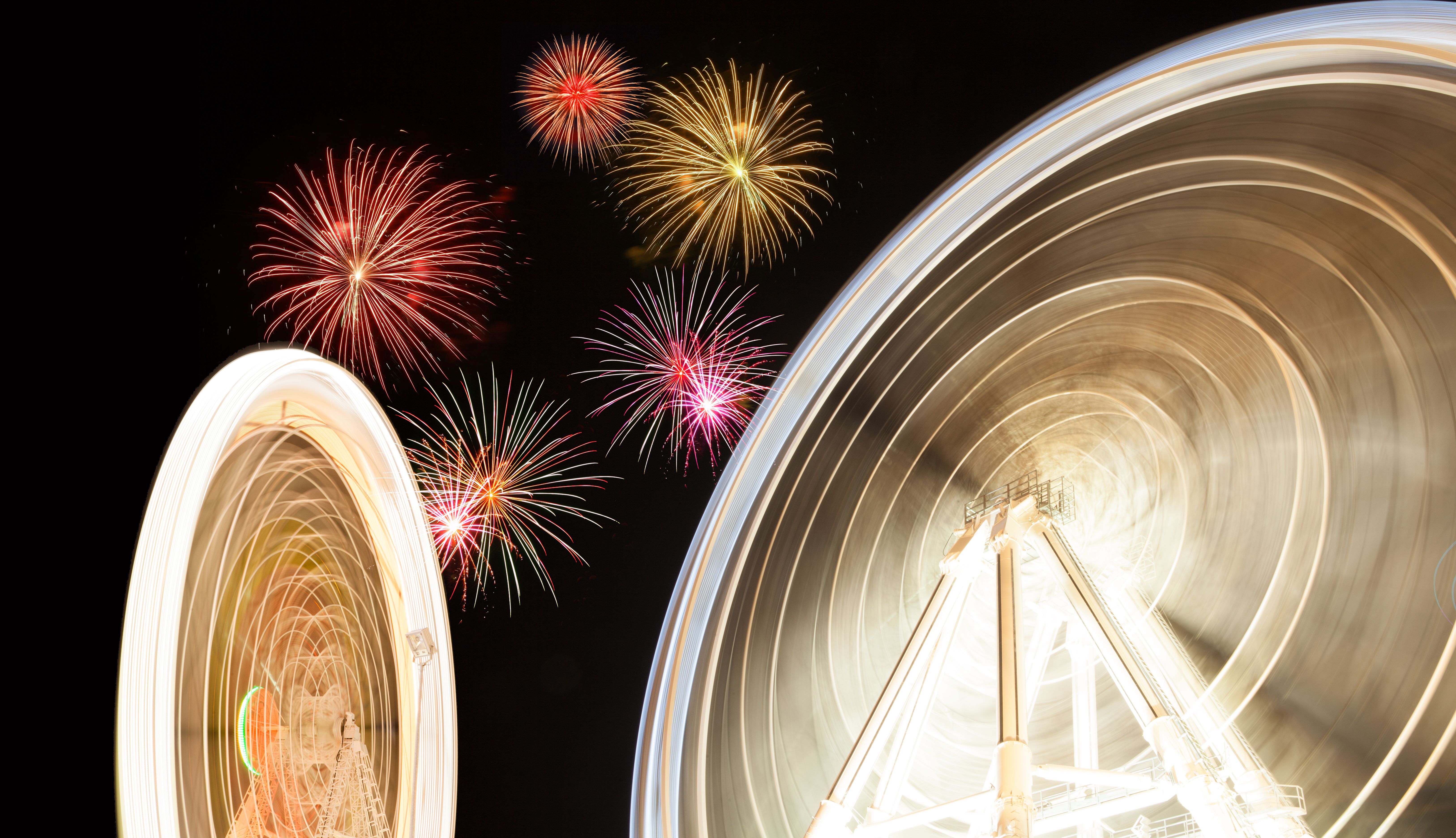Baby, You're a Firework!

Most of the pros are already aware of most of these tips, but hopefully pros and amateurs can take something away from the following tips.
For starters, it helps to use a tripod. This keeps the camera still while the shutter is open, thereby reducing the chance of blurred photos. You will need to use bulb mode on your camera, or the slowest shutter speed you can manage. This allows more light to enter the camera’s sensor.
The tripod rule is nullified if you’re lucky enough to shoot close to the fireworks display. Tripods won’t absorb the vibration. A bean bag beneath the camera can be used instead.
Likewise, when using a tripod it’s helpful to also use a remote so as to avoid camera shake while pressing the shutter button. If you don’t have a remote, you can use the self- timer function.
Be sure to turn your flash off so the camera doesn’t think there’s more light available and attempt to compensate with a shorter exposure time.
The other part of the equation besides your shutter is your aperture; it seems counter- intuitive to use a smaller aperture, but an aperture between f/8 and f/16 usually works quite well due to the fact that fireworks emit quite a bit of light.
If you’re the owner proud owner of a point-and-shoot instead of a DSLR, look for the aperture priority mode. Set your aperture to between f/8 and f/16. Or utilize your night mode or fireworks mode.
Exposure time can vary between two and fifteen seconds. I’d recommend trying varying exposures. A long exposure time of fifteen seconds can cause the image to become overexposed if there are multiple bursts of fireworks.
There are no hard and fast rules concerning lenses. It depends on how much of the background you want to show, if any. However, you may find that you need a longer zooms lens if you are a good distance away from the fireworks. I’m partial to zoom lenses because of the flexibility they offer.
Avoid looking at the preview screen after every shot, or else you miss opportunities. You still want to check every several shots to be sure you’re getting a good set but try to avoid checking your screen after single shot.
Your ISO should be set at 100 to avoid digital noise, and as stated before, fireworks do emit a lot of light so you needn’t worry about using a high ISO.
Some other things to be mindful of are smoke, which can make your shots look hazy. Using a piece of black foam or black paper in front of the lens while in burst mode, and then moving it away from the lens during the fireworks display allows for multiple bursts to be shown in one exposure.
If you’re near any street lights, be sure to use a lens hood to minimize excess light coming in and overexposing your photo.
Long exposures mean longer processing time for your camera so get a high speed memory card and save time.
Bodacious Betty
bodaciousbettyfl.com
boudoirbettyfl.com
Hi Bo Betty,
Your photography advice is really good!
Thanks for sharing it!
Thank you for reading!